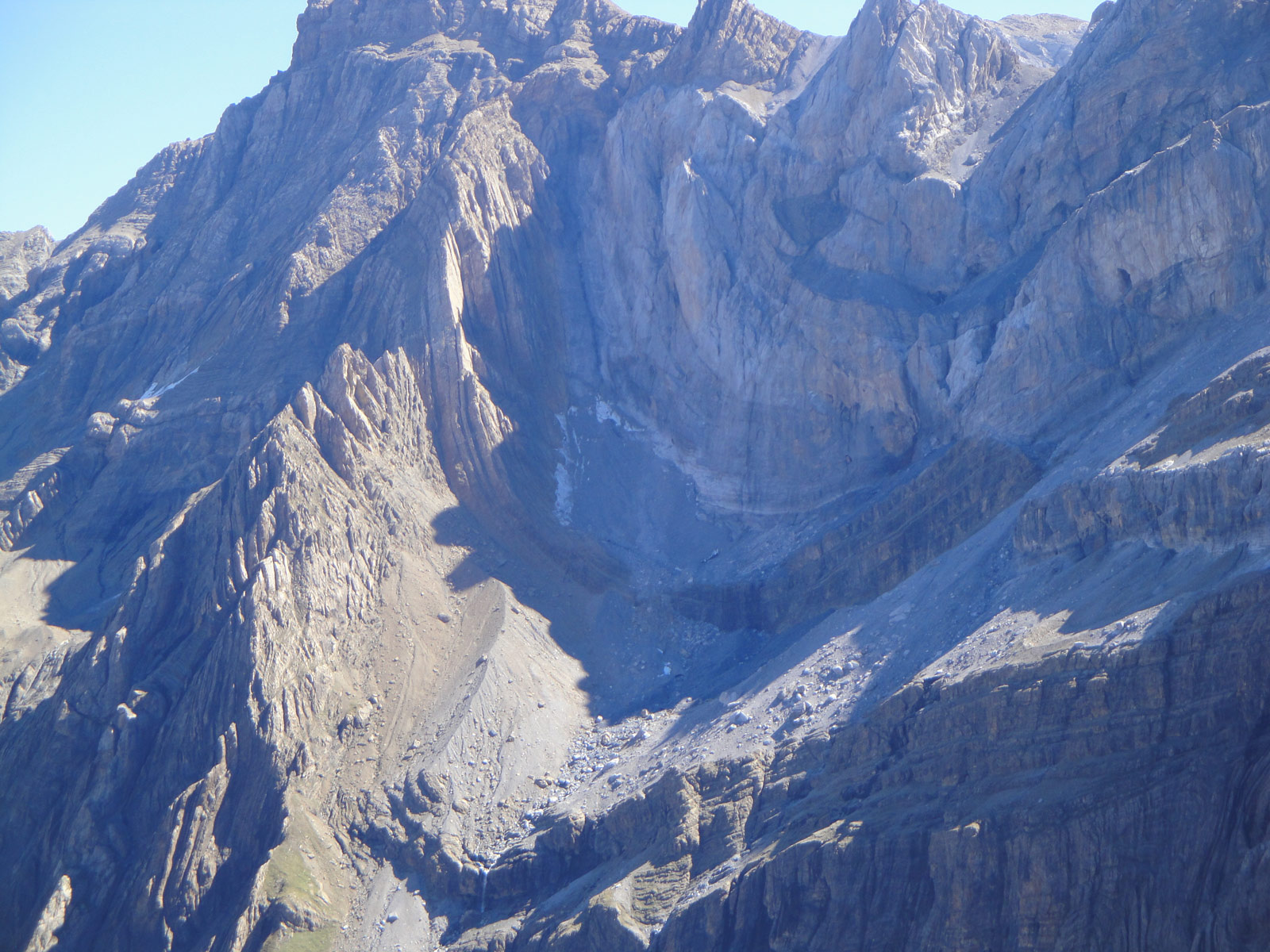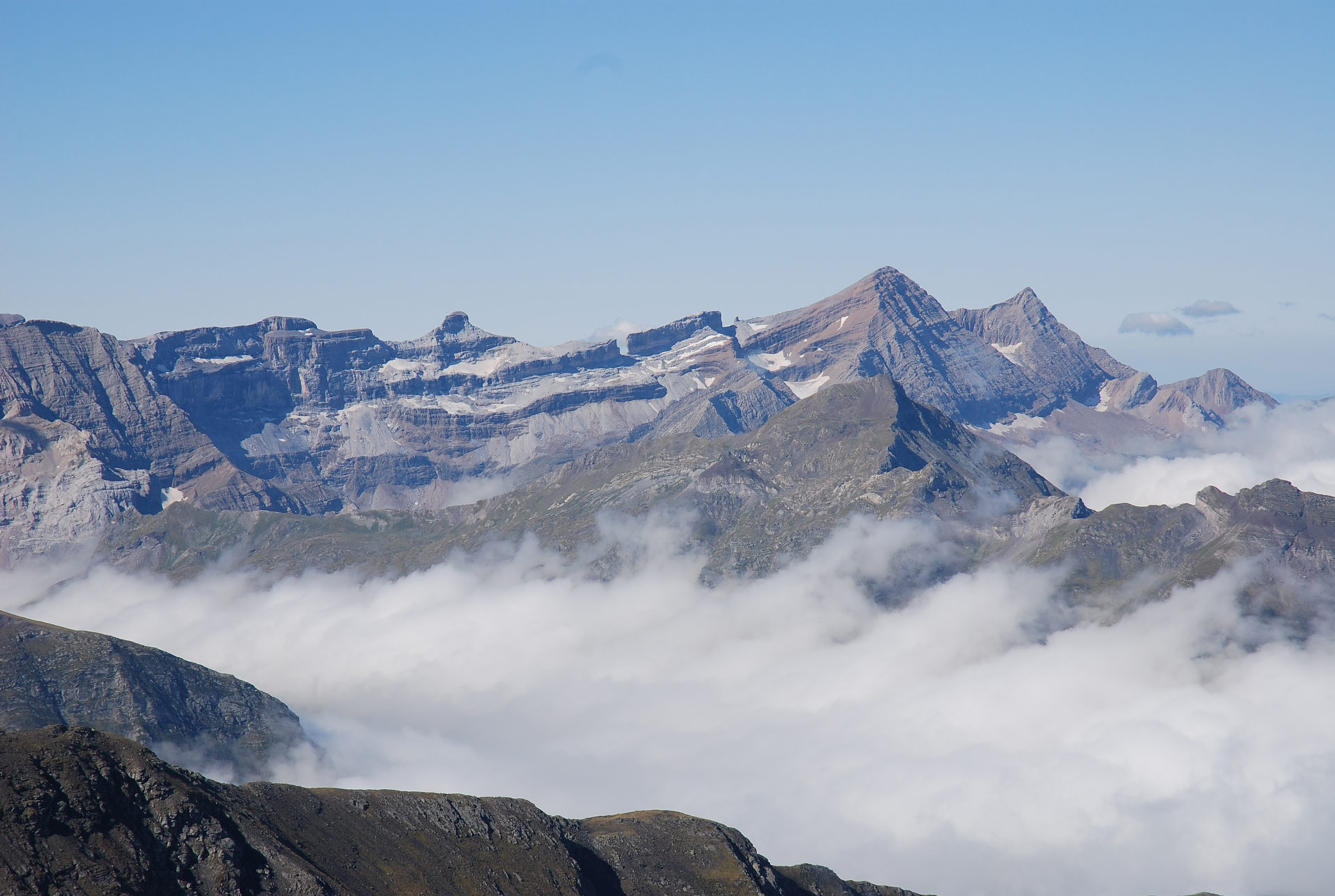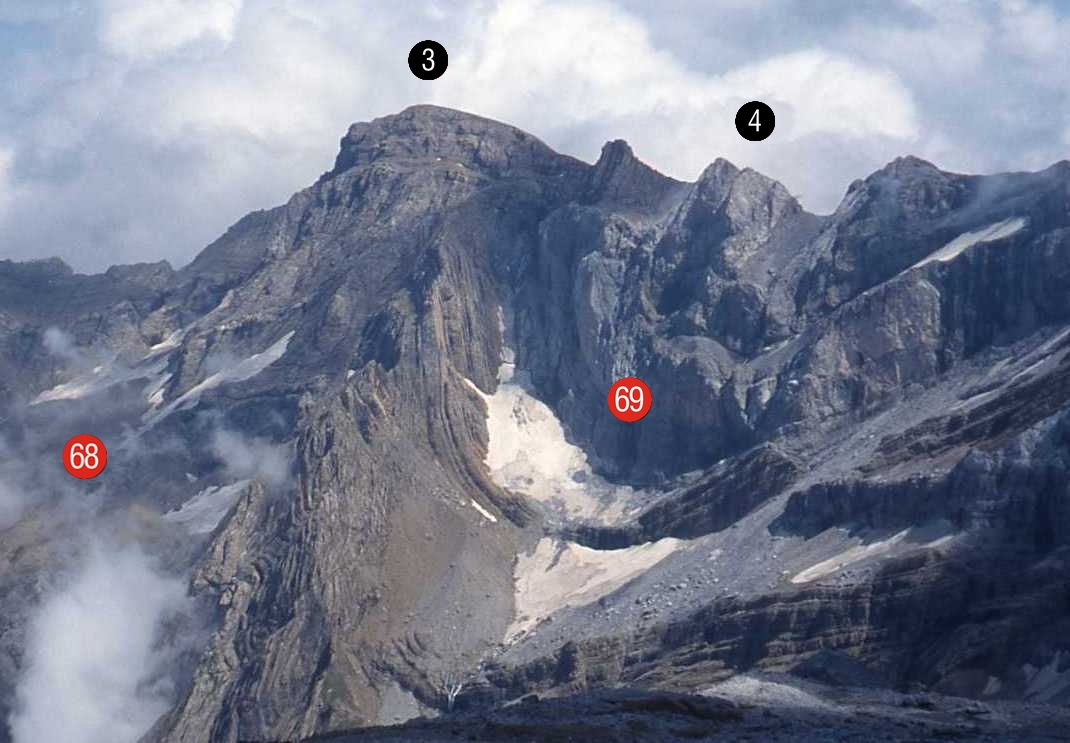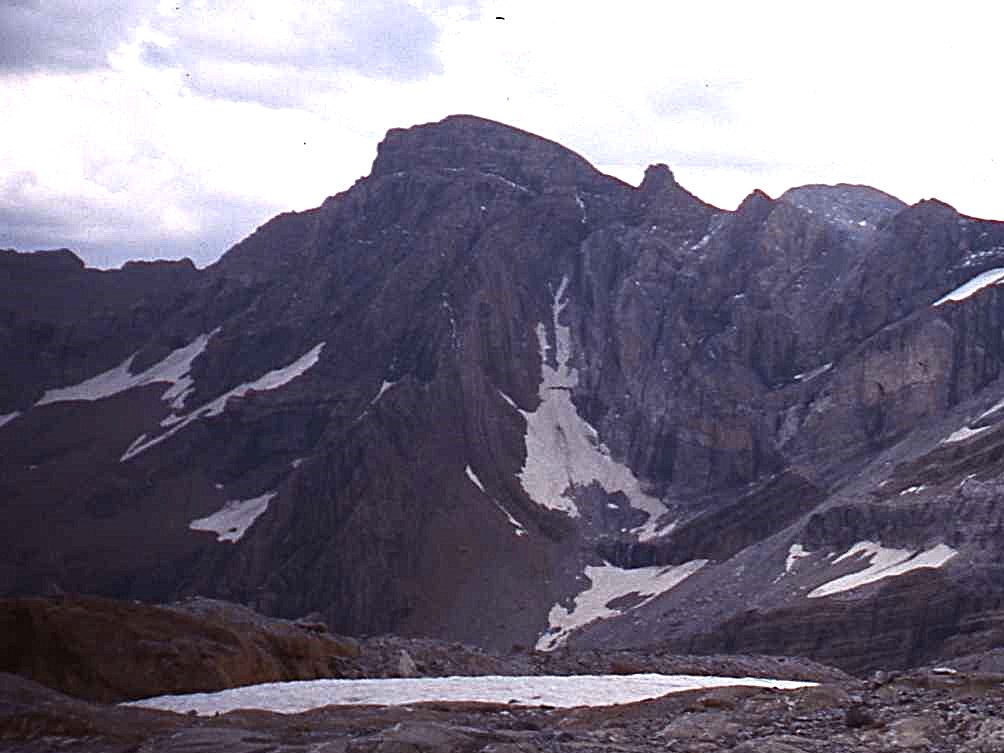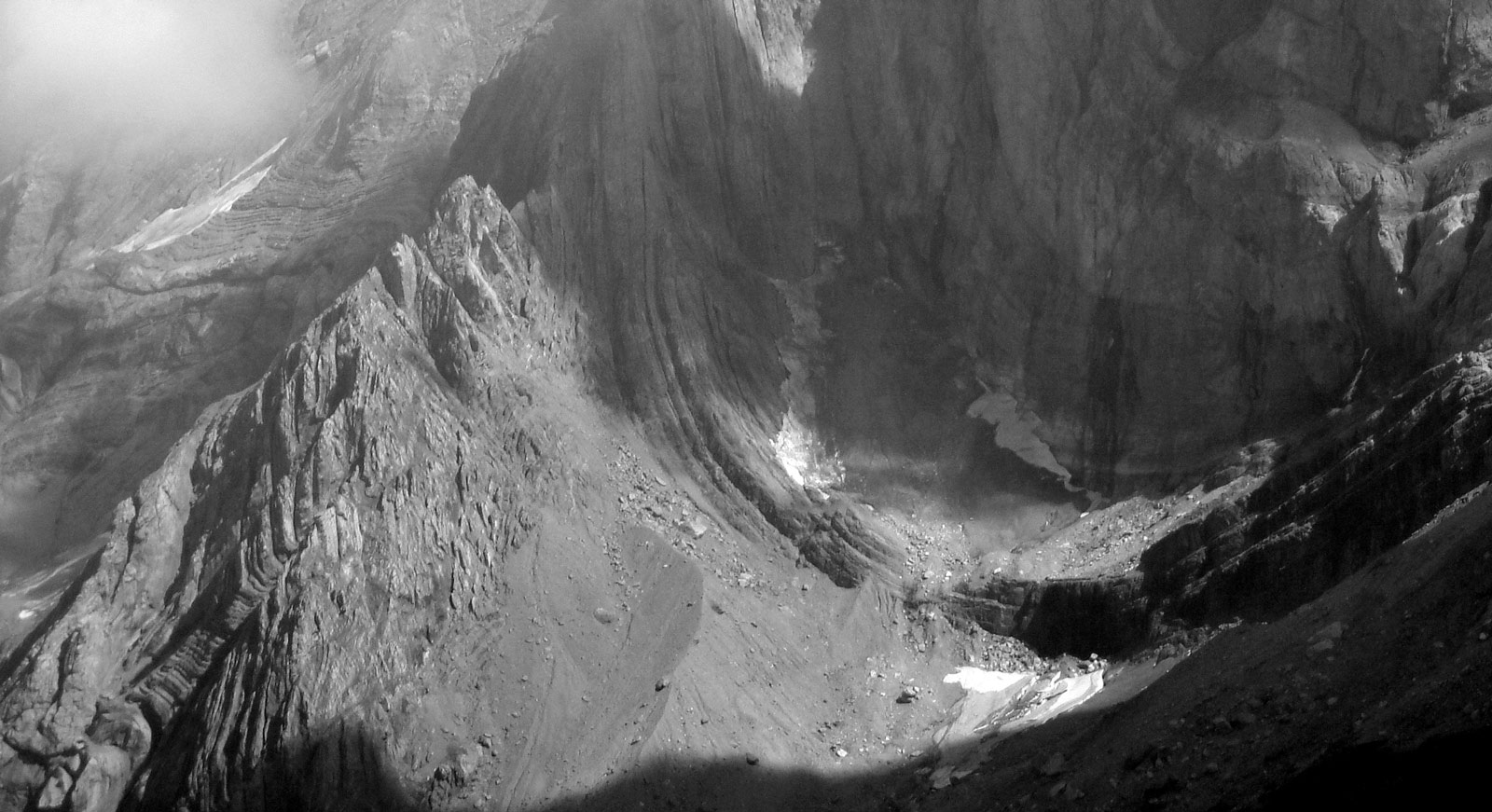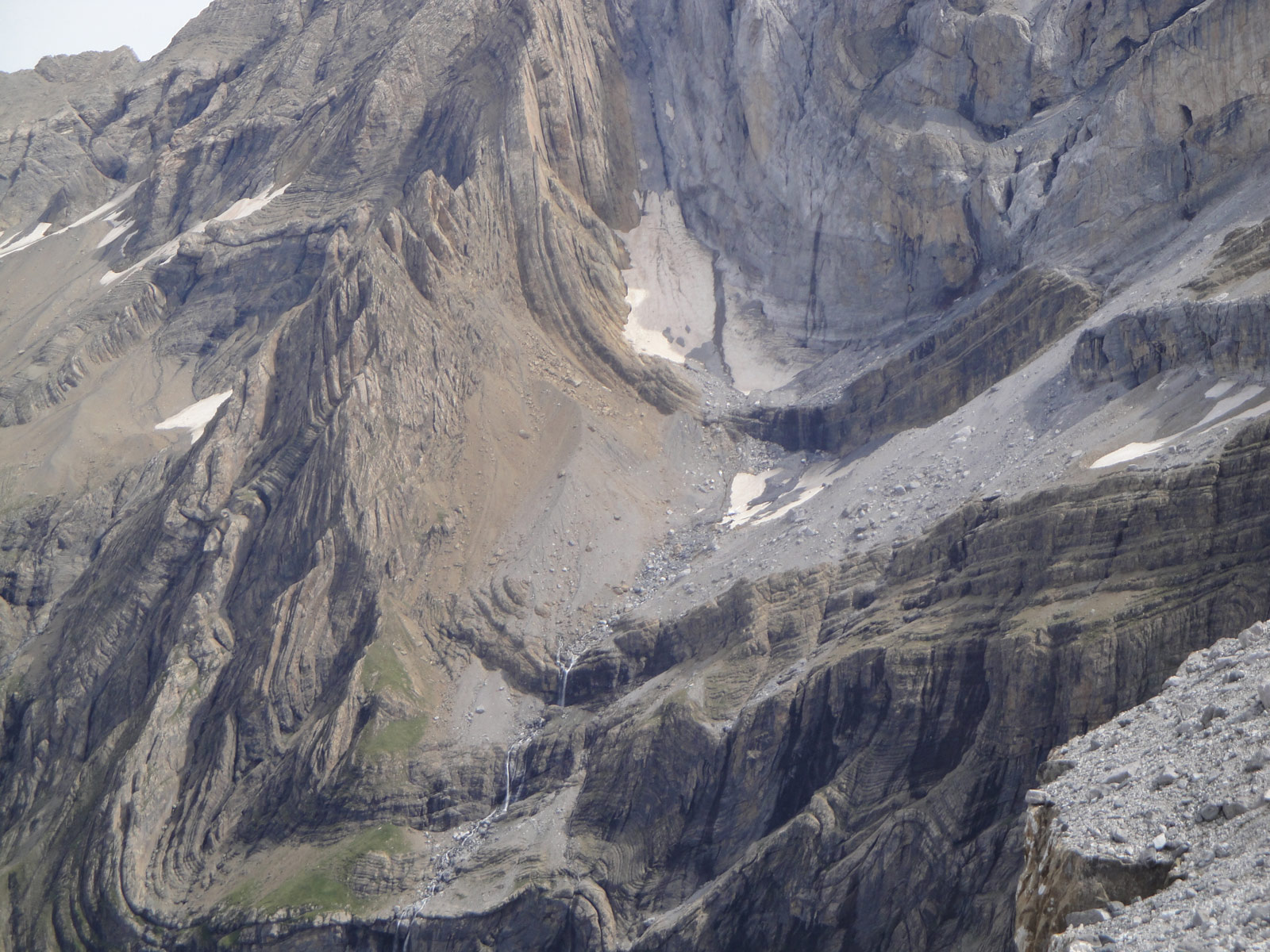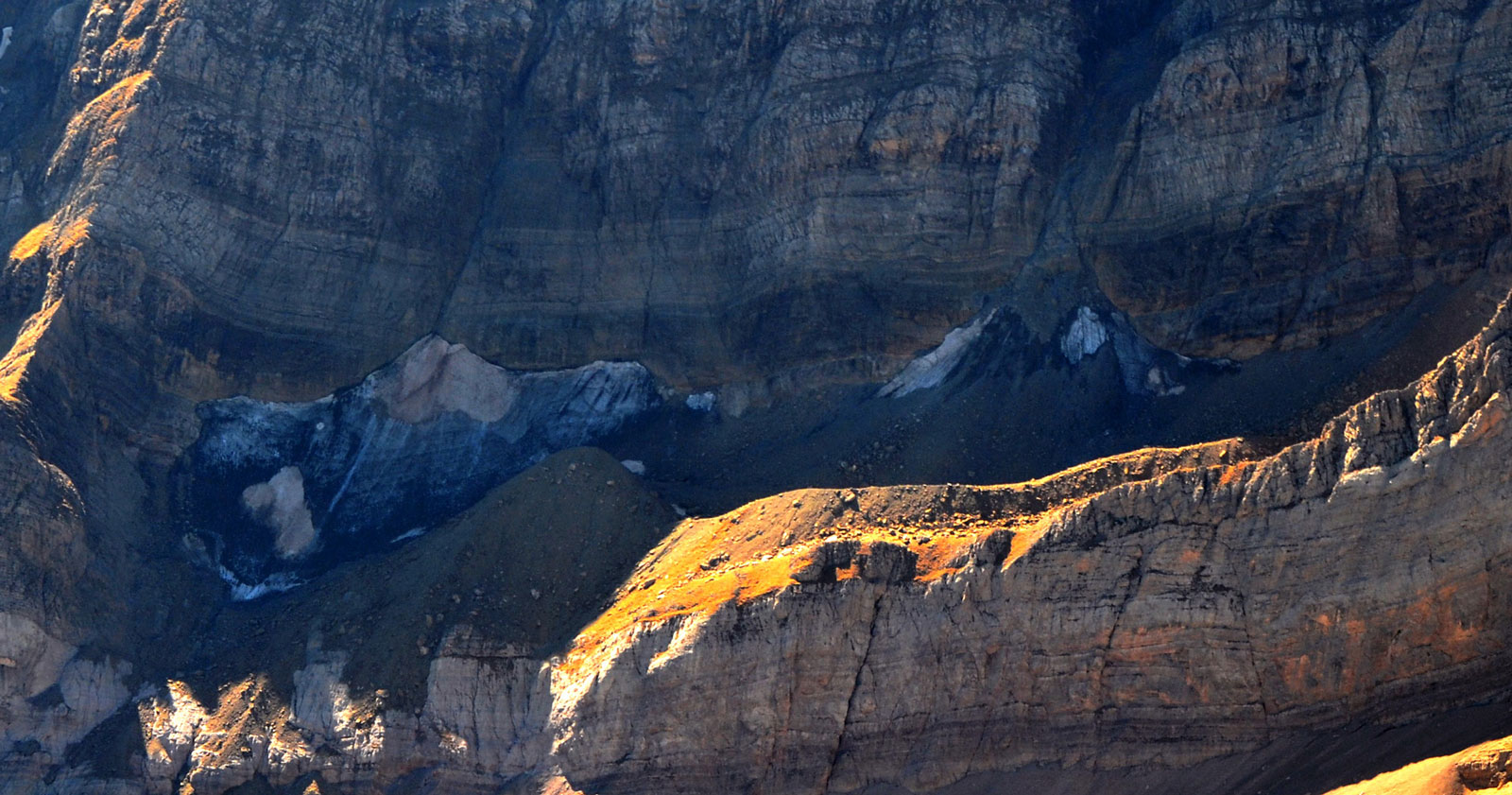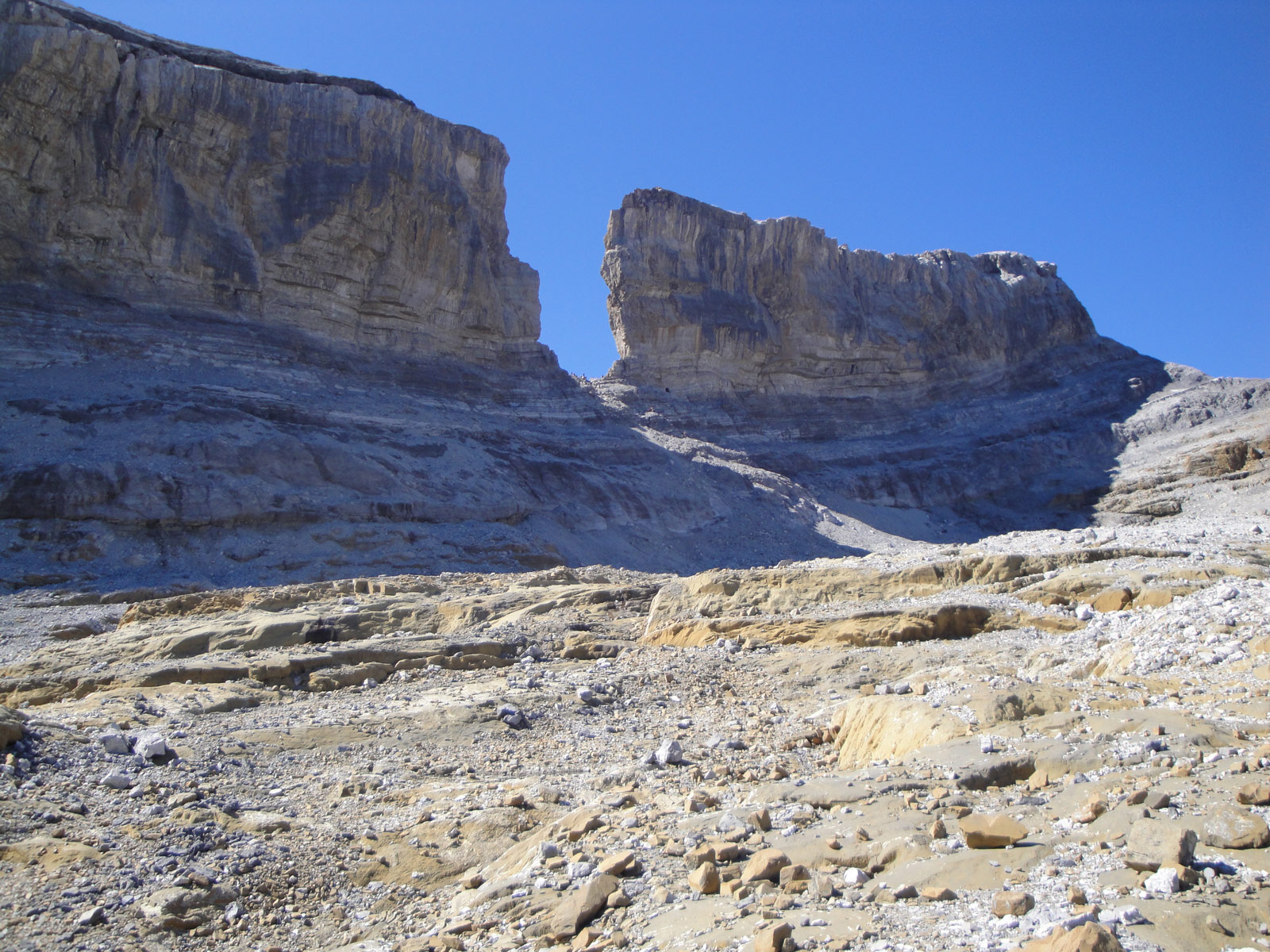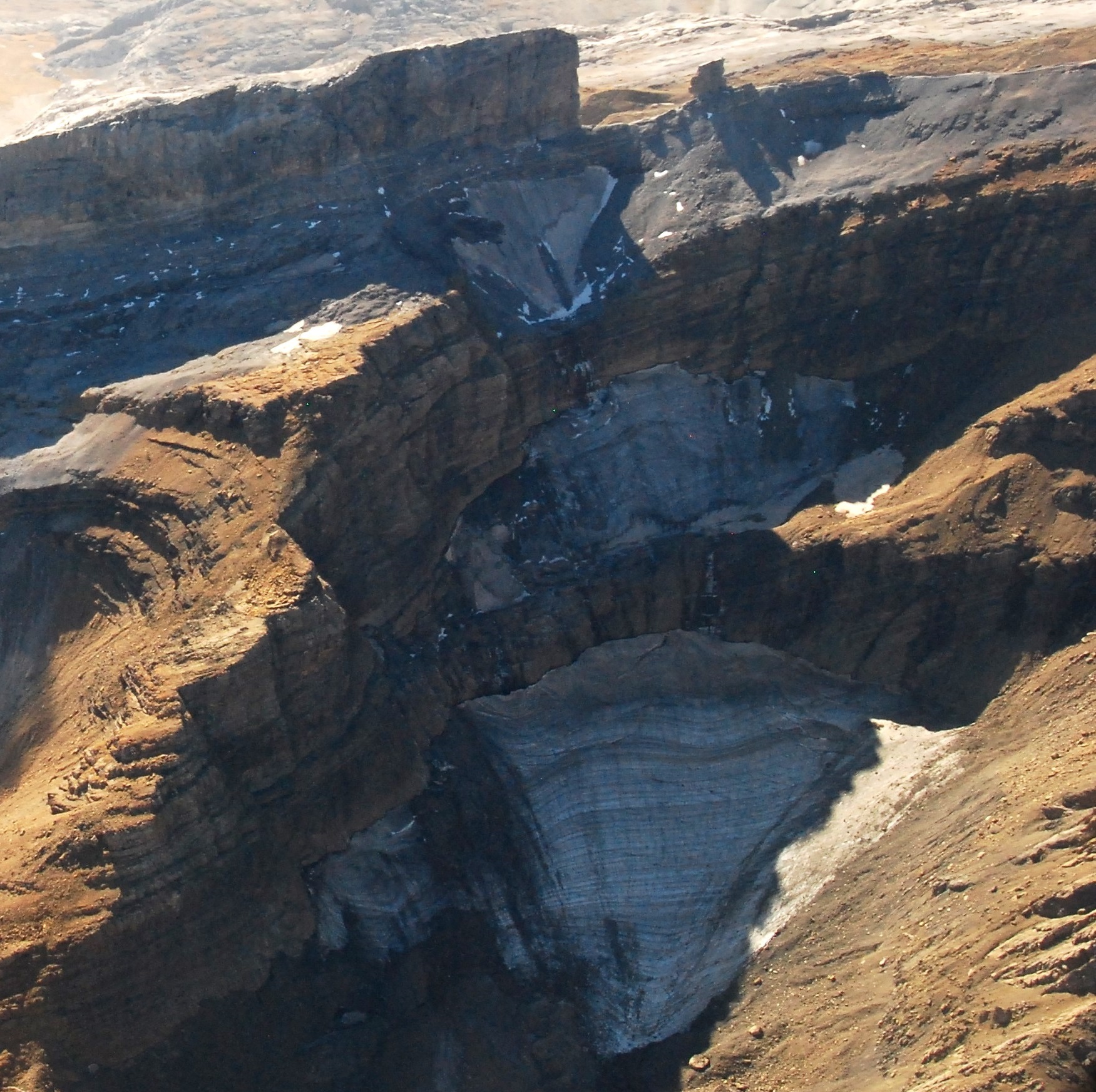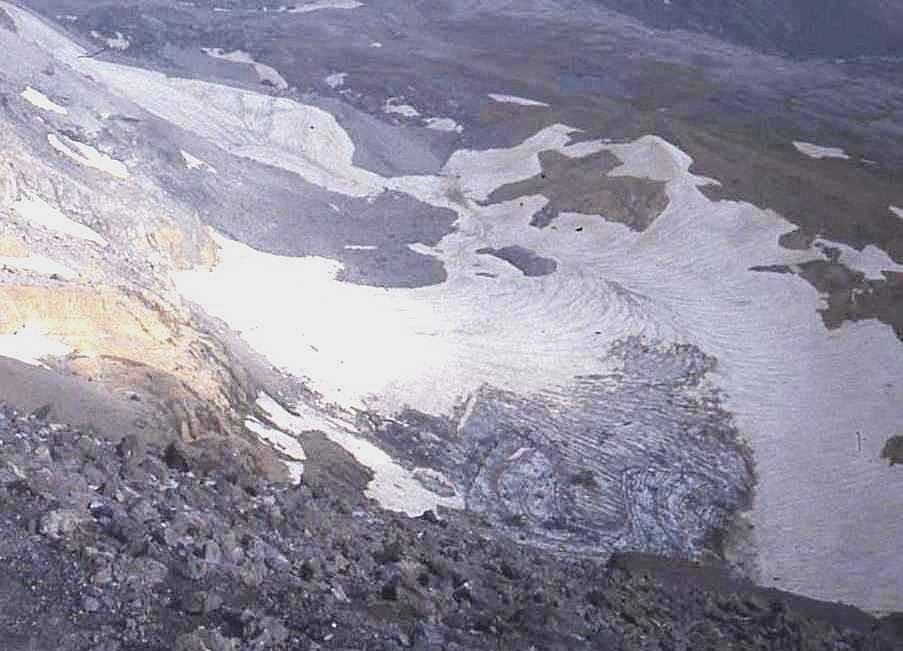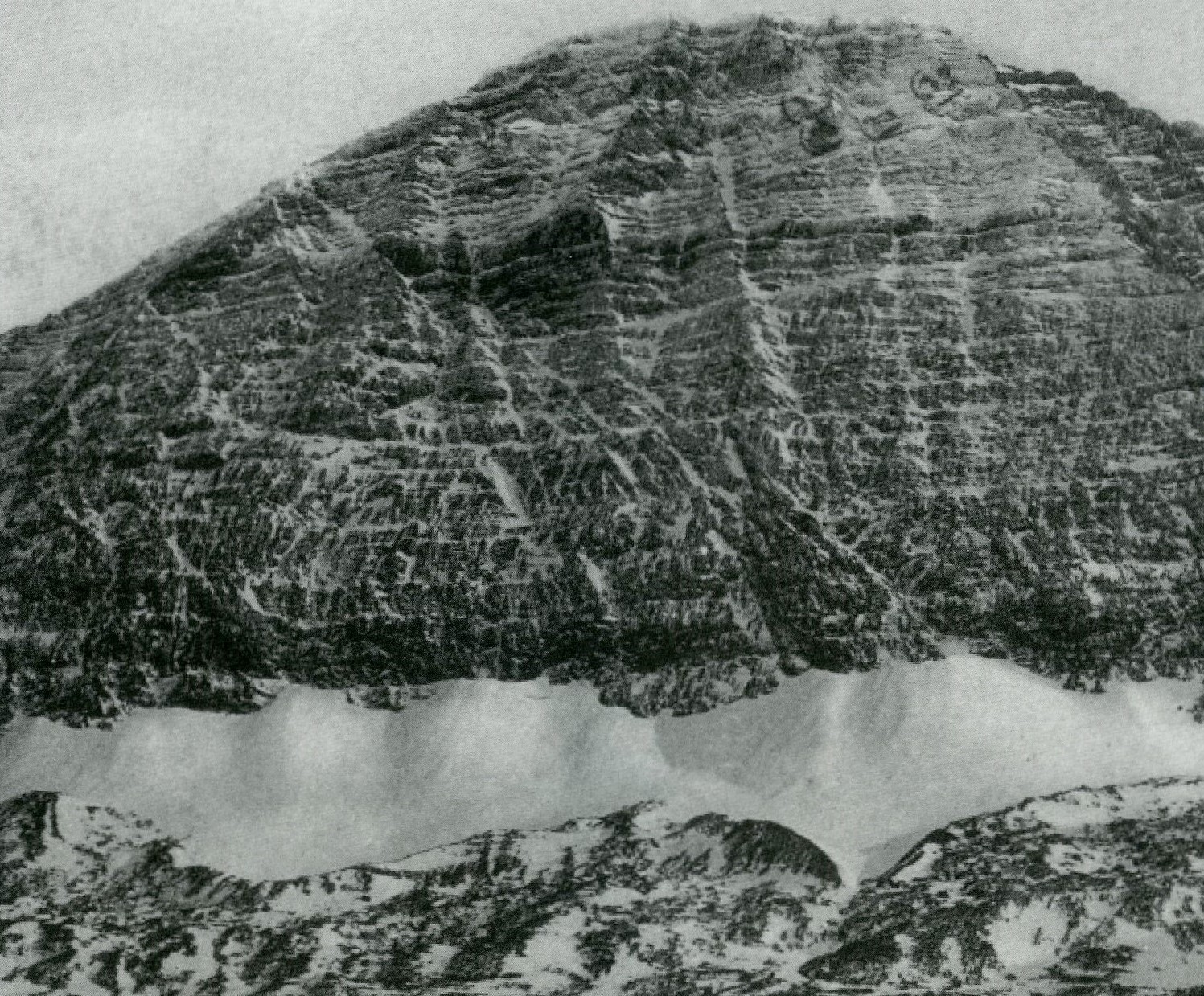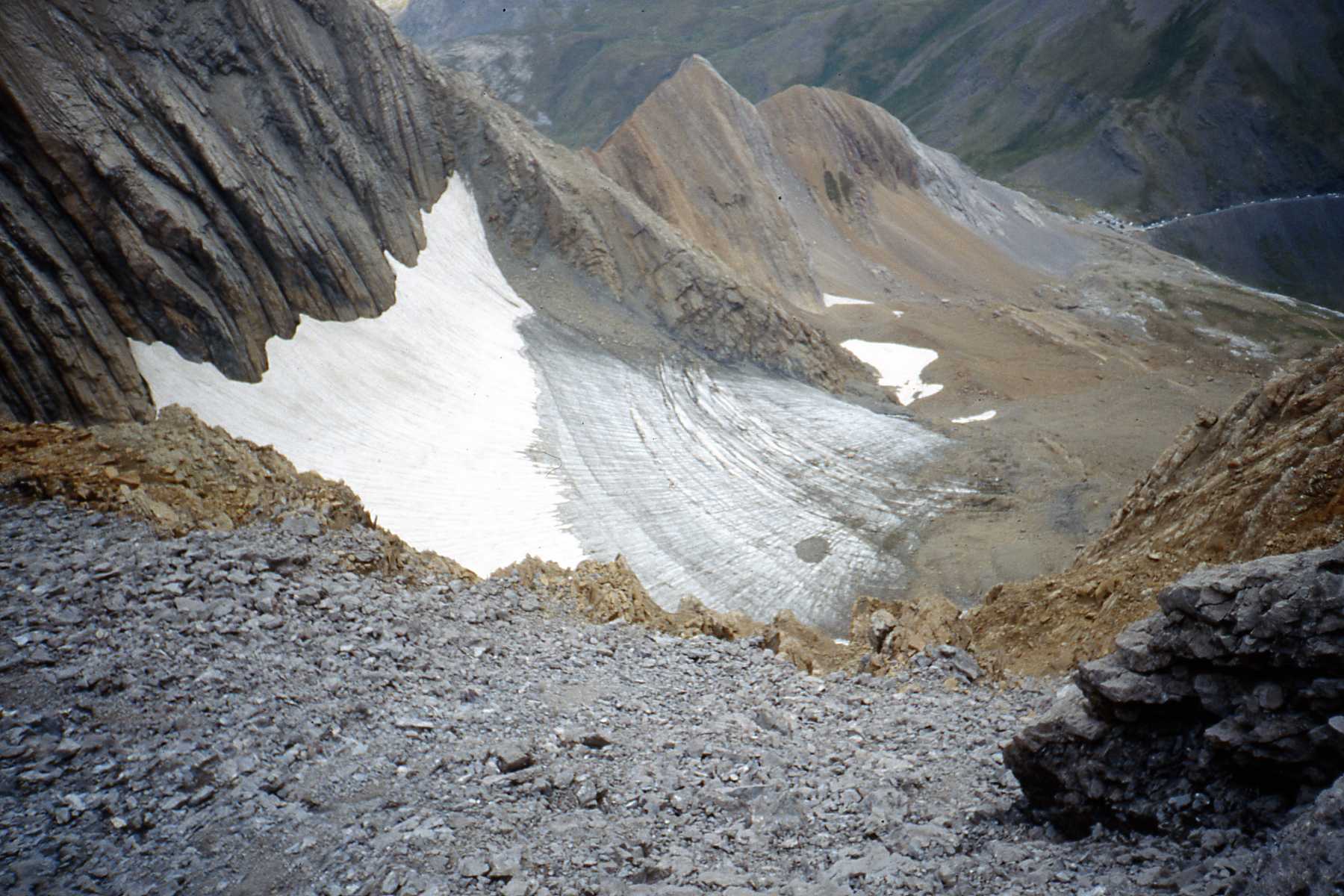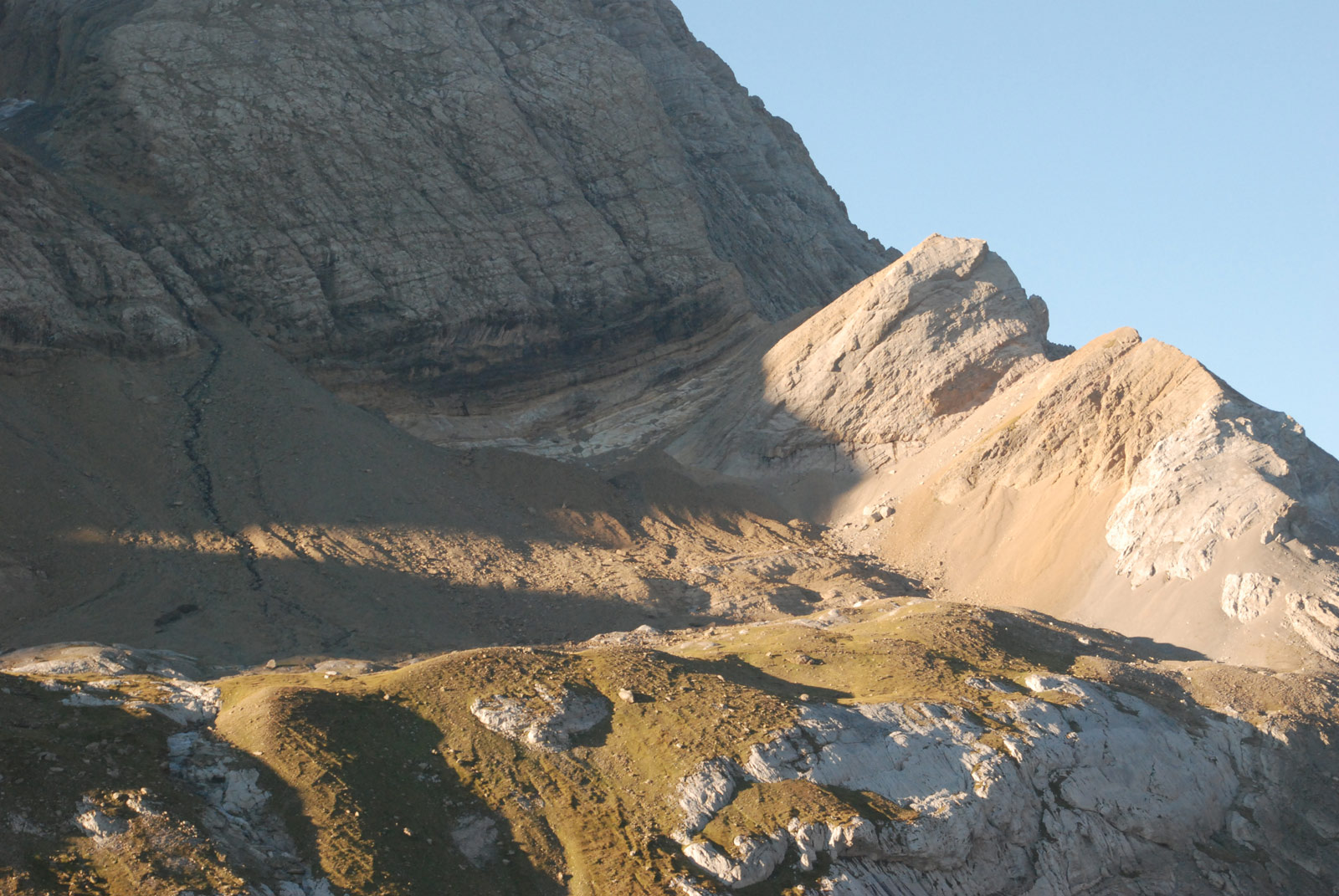The Glacier de La Cascada is located on two terraces of the Cirque de Gavarnie, west of the Pic du Marbore (3,248 m), directly below the Three Peaks of the Cascade and the Espalda de Marbore (3,105 and 3,074 m). During the Little Ice Age, the glacier reached a length of 1,050 m and an area of 25 ha.
In the last third of the 20th century, it was divided into two sectors by the strip of rock separating the two steps. It was located in a small space with a 300 m drop, which, despite the weakness of the glacier, still facilitated the sliding of ice and erosion debris that broke away from the wall. After the first decade of the 21st century, the abundance of this material, which turned it into a black glacier, exceeded the rock strip of the step, appearing to be the only link between the two sectors of the glacier.
In 2012, the upper glacier showed weak signs of movement at the highest levels and three longitudinal cracks near its western margin. These signs of movement ceased to be observed in 2017, when it was classified as a helero, and the lower fragment was considered extinct.
In recent years, the regression process has accelerated, changing its classification to black helero, with an approximate area of 1.7 ha in 2025.
Este aparato glaciar pertenece al siguiente macizo:
69) La Cascada
Comparativa de imágenes


Comparison of 133 years.
The Cascada Glacier in 1889, when it exceeded the steps of the Gavarnie terraces. (Detail of photograph by Lucien Briet).
In 2022, the Cascada Glacier, inactive and well camouflaged in its surroundings, has become a black glacier. (Jordi Camins).

